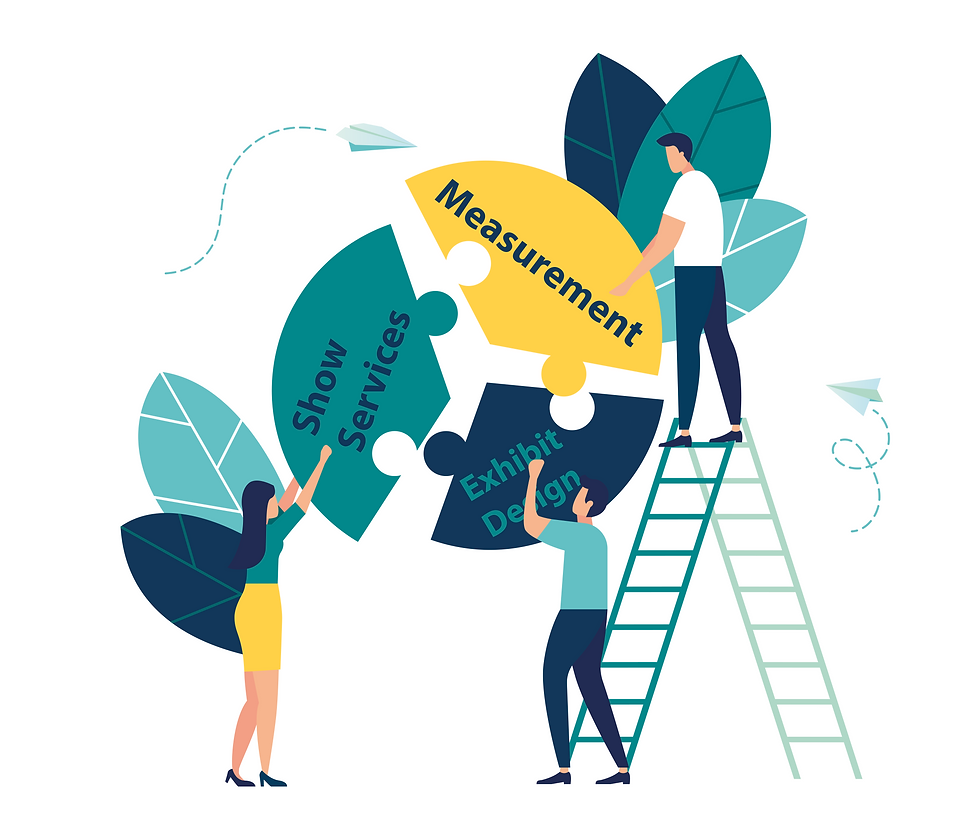What A Jar of M&M’S®s Can Teach You About Booth Engagement
- fs-partners
- Jun 3
- 3 min read

You’ve seen this game a hundred times: Guess how many M&M’S®s are in the jar?
Simple enough. You eyeball the size of the jar, squint, do some fuzzy mental math, maybe count some rows and jot down a number. But the moment you walk away you rethink your guess.
Did you estimate the total volume or visible surface?
Did you account for gaps between candies?
Did the color distribution trick your brain?
Has someone been eating out of the jar?
That’s what it’s like trying to evaluate trade show performance by manual methods or gut feel. Without context, it’s just a guess.
Estimating is Easy. Understanding is Hard
Just like with the M&M’S® jar, your booth might have looked full.
People walked by. Maybe a lot of people walked in. But what does that really tell you?
How many visitors just passed through without engaging?
How long did people stay?
What displays were most and least attractive?
Did your content or layout influence dwell time?
A show floor is noisy, distracting environments. Visuals are deceiving. Activity doesn’t always equal impact.
Unless you’re measuring actual behavior, post-show “success” often ends up based on what felt good - not what was effective.
The Human Brain vs. Event Perception
If someone gave you a scoop and let you feel the weight of the M&M’S®, you’d probably guess a closer number. If they handed you a ruler - or better yet, a tool that counted each piece going in and out - you’d be unstoppable.
Just like the M&M’S® jar, your booth might look full, but without the right tools, you’re just guessing. FastSensor’s analytics are that counter - tracking how many pass, pause, explore and engage, so you can move from estimation to clarity.
At its core, the M&M’S® Game is not about candy - it’s a demonstration of how our brains process complexity.
The human brain uses something called selective attention to navigate high-stimulus environments. It filters out most of the noise and zeroes in on what seems important in the moment.
At a trade show or event, this means:
We notice crowds, but not how many people truly engaged
We remember peak moments, but not the flow over time
We assume high traffic = success, even if people didn’t stay or interact.
That's why event debriefs often sound like:
“It felt like a good show.”
“We were packed all day.”
“I think we had stronger conversations this year.”
These statements might feel right - but they’re shaped by bias, fatigue and selective memory. Just like the M&M’S® guess, our brains aren’t built to track large-scale behavior on the fly.
From Perception to Proof
At a recent industry event, our own 10x20 in-line booth tucked along the side wall looked modest compared to the surrounding islands. At first glance, it didn’t appear busy.
Using FastSensor’s analytics, we measured real behavior:

Impressions – The number of people who came into visual range of our booth
Walk-Bys – Attendees who passed close, but didn’t stop
Walk-Ins – Visitors who physically entered the space
Qualified Visitors (FQVs) – Those who stayed long enough or visited multiple areas to indicate real engagement
Engagers – A deeper subset of FQVs who demonstrated meaningful, focused interaction
Despite our small footprint and low-profile location, the data revealed:
High brand awareness and impressions
Strong conversion from walk-bys to qualified visitors
High dwell times of qualified visitors
What looked average on the surface turned out to be highly effective beneath it.
Guessing Feels Right. Measuring Gets It Right.
Trade shows are complex, fast-moving and filled with too many variables for the human brain to track. If we can misjudge something as simple as a jar of candy, imagine how much harder it is to gauge booth performance without data.
In the end, the difference between guessing and knowing is the difference between feeling successful - and proving it.
When it comes to event ROI, proof is everything.




Comments